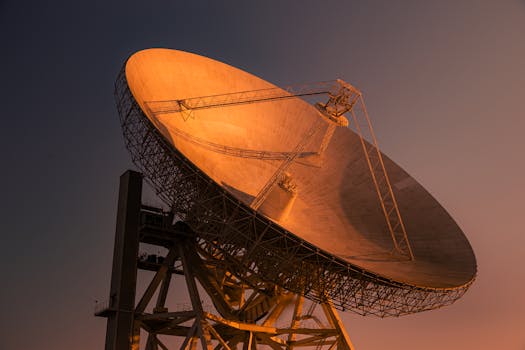Harnessing the Skies: New Technologies Transforming Satellite Communications
The satellite communications industry is undergoing a significant transformation, driven by new technologies that are changing the way we communicate and access data. In this article, we will explore the latest advancements in satellite communications and their potential impact on various industries.

Harnessing the Skies: New Technologies Transforming Satellite Communications
New technologies are transforming the Satellite Communications industry, enabling faster, more reliable, and more efficient communication services. The latest advancements in satellite technology are driving innovation and growth in various industries, including telecommunications, navigation, and remote sensing. In this article, we will delve into the world of Satellite Communications and explore the new technologies that are revolutionizing the industry.
The Satellite Communications industry has come a long way since the launch of the first commercial satellite, Intelsat 1, in 1965. Over the years, satellites have played a crucial role in providing global communication services, including voice, data, and video transmission. However, the industry has faced several challenges, including high latency, limited bandwidth, and high costs. The advent of new technologies has addressed these challenges, enabling the development of more efficient, reliable, and cost-effective satellite communication systems.
Advancements in Satellite Technology
Several technological advancements have contributed to the transformation of the Satellite Communications industry. Some of the key developments include the introduction of high-throughput satellites (HTS), the use of advanced propulsion systems, and the development of smaller, more efficient satellites. HTS satellites offer higher bandwidth and faster data transfer rates, making them ideal for applications such as broadband internet, video streaming, and mobile connectivity. Advanced propulsion systems, such as electric propulsion and Hall effect thrusters, enable satellites to reach orbit more efficiently and extend their lifespan. The development of smaller satellites, such as CubeSats and SmallSats, has reduced the cost of launching satellites, making space more accessible to a wider range of industries and applications.
Applications of Satellite Communications
Satellite communications have a wide range of applications across various industries. In the telecommunications sector, satellites provide connectivity to remote and underserved areas, enabling access to voice, data, and video services. In the navigation sector, satellites provide location information and timing signals, enabling GPS, GLONASS, and other navigation systems. In the remote sensing sector, satellites provide Earth observation data, enabling applications such as weather forecasting, crop monitoring, and disaster response. The use of satellite communications is also increasing in the maritime and aviation sectors, where they provide critical connectivity for navigation, safety, and operational purposes.
Challenges and Future Directions
Despite the advancements in Satellite Communications, the industry still faces several challenges. One of the major challenges is the risk of congestion in the satellite spectrum, which can lead to interference and reduced performance. Another challenge is the need for more efficient and sustainable satellite systems, which can minimize waste and reduce the environmental impact of satellite operations. To address these challenges, the industry is investing in new technologies, such as satellite-based internet of things (IoT) and 5G networks. The development of these technologies is expected to drive growth and innovation in the Satellite Communications industry, enabling new applications and services that can transform various aspects of our lives.



